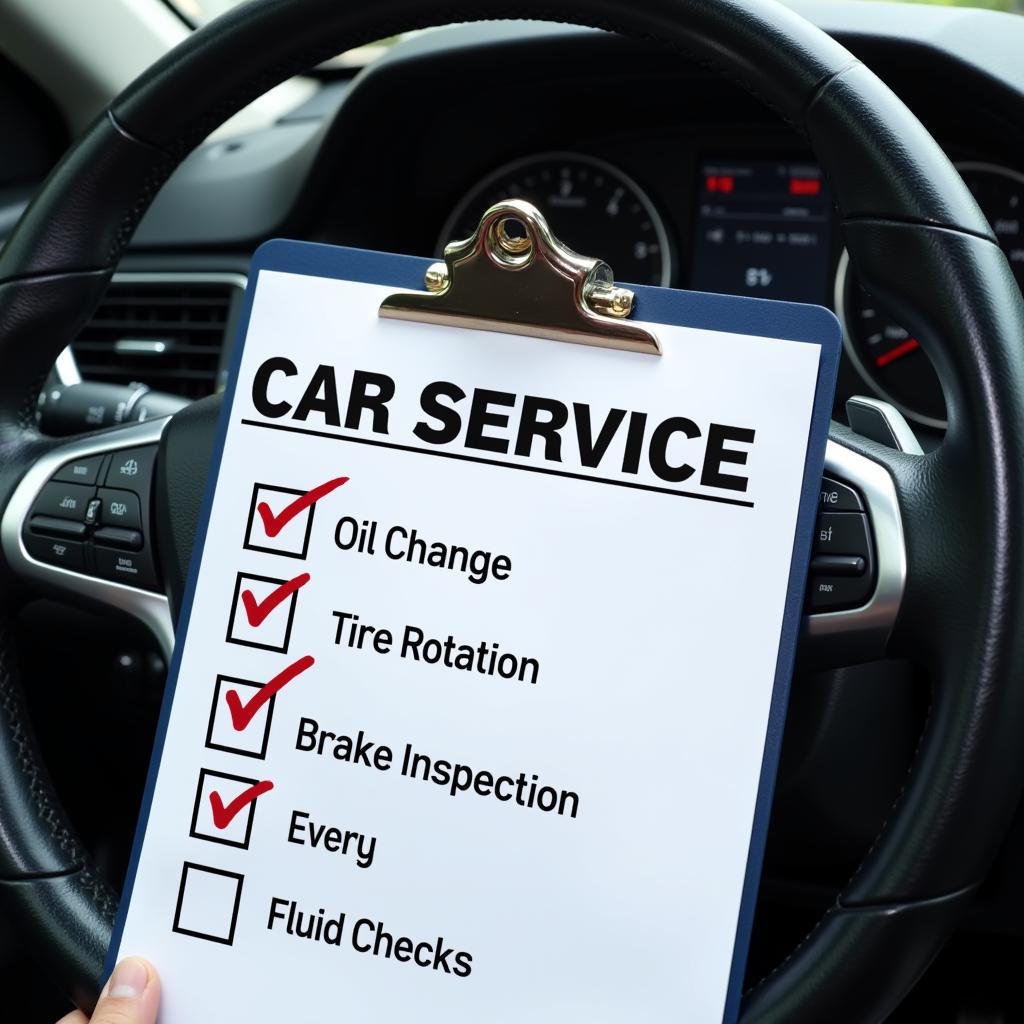How Often Should You Service a Car? A Comprehensive Guide
Owning a car comes with responsibilities, and one of the most important is regular servicing. But how often should you service a car? The answer isn’t always straightforward, as it depends on various factors like your car’s make and model, age, driving conditions, and manufacturer recommendations.
This comprehensive guide delves into everything you need to know about car servicing intervals, helping you keep your vehicle in top condition and avoid costly repairs down the road.
Understanding Car Servicing: Why is it Important?
Car servicing involves a series of checks and maintenance procedures performed by qualified technicians to ensure your vehicle operates safely and efficiently. Think of it as a health check-up for your car.
Regular servicing offers several benefits:
- Increased Safety: Servicing addresses potential safety hazards by inspecting brakes, tires, lights, and other critical components.
- Improved Performance: Regular oil changes, filter replacements, and tune-ups keep your engine running smoothly and efficiently.
- Extended Lifespan: Proper maintenance can significantly extend your car’s life, preventing premature wear and tear on vital components.
- Fuel Efficiency: A well-maintained engine burns fuel more efficiently, saving you money at the pump.
- Higher Resale Value: A car with a complete service history is more attractive to potential buyers, commanding a better price.
 Car Service Checklist
Car Service Checklist
Decoding Service Intervals: How Often Should U Service a Car?
While there’s no one-size-fits-all answer, car manufacturers provide recommended service intervals in your owner’s manual. These are typically based on mileage or time, whichever comes first. Common service intervals include:
- Every 3,000 miles or 3 months: This often applies to older vehicles or those driven in harsh conditions. Services may include oil and filter changes, tire rotation, and basic inspections.
- Every 6,000 miles or 6 months: This is a standard interval for many modern cars and includes the services mentioned above, plus additional checks on brakes, fluids, and belts.
- Every 12,000 miles or 12 months: This is becoming increasingly common for newer vehicles with advanced technology. It covers more comprehensive inspections and may include replacing specific filters and fluids.
“Always refer to your owner’s manual for the most accurate service schedule for your specific car model,” advises John Miller, Senior Automotive Technician at CarCare Pros. “It outlines the manufacturer’s recommendations, ensuring you follow the correct maintenance procedures.”
 Car Owner's Manual Service Schedule
Car Owner's Manual Service Schedule
Factors Influencing Service Frequency
While manufacturer recommendations are a good starting point, several factors can influence how often you should service your car:
- Driving Conditions: Frequent stop-and-go city driving, extreme temperatures, dusty environments, and heavy loads put more strain on your car, requiring more frequent servicing.
- Driving Style: Aggressive driving habits like hard braking, rapid acceleration, and high speeds can accelerate wear and tear, necessitating more frequent service visits.
- Vehicle Age: As cars age, components naturally wear down, making regular servicing even more critical to prevent breakdowns and costly repairs.
- Oil Type: Using synthetic oil generally allows for extended oil change intervals compared to conventional oil.
how often should you service your car to learn more about the impact of different driving habits and environments on your car’s maintenance needs.
Types of Car Services: From Basic to Major
Car services are generally categorized into two main types:
1. Interim Service
Also known as a basic service, an interim service is a preventative maintenance check typically performed every 6,000 miles or 6 months. It includes:
- Oil and Filter Change
- Tire Rotation
- Brake Inspection
- Fluid Top-ups
- Visual Inspection of Belts, Hoses, and Lights
2. Full Service
A full service, or major service, is a more comprehensive check-up recommended annually or every 12,000 miles. It includes everything in an interim service, plus:
- Replacement of Air Filter
- Inspection of Spark Plugs
- Brake Fluid Flush
- Coolant System Check
- Thorough Inspection of Steering, Suspension, and Exhaust Systems
how often major service car provides a detailed breakdown of the tasks involved in a major car service, helping you understand its importance for your vehicle’s long-term health.
Warning Signs Your Car Needs a Service
While sticking to recommended intervals is ideal, your car may need servicing sooner if you notice any of these warning signs:
- Unusual Noises: Squealing brakes, grinding gears, knocking sounds from the engine, or any other unfamiliar noises warrant immediate attention.
- Fluid Leaks: Puddles of oil, coolant, or other fluids under your car indicate a leak that needs to be addressed promptly.
- Warning Lights: Never ignore illuminated warning lights on your dashboard, such as the check engine light, oil pressure light, or brake warning light.
- Performance Issues: Rough idling, decreased fuel efficiency, difficulty starting, or loss of power can signal underlying mechanical problems.
- Burning Smells: Unusual odors like burning rubber, oil, or a sweet smell can indicate serious issues requiring immediate attention.
 Car Dashboard Warning Lights
Car Dashboard Warning Lights
Low Mileage Cars: Do They Need Regular Servicing?
Even if you don’t drive your car frequently, regular servicing remains essential. While mileage-based intervals may not apply, time-based recommendations are crucial. Fluids can deteriorate, rubber components can dry out, and batteries can lose charge over time, even with minimal use.
how often should a low mileage car be serviced addresses the specific maintenance needs of low-mileage vehicles, ensuring you don’t overlook crucial service tasks.
Conclusion
Understanding how often to service your car is crucial for its longevity, performance, and your safety. By following manufacturer recommendations, considering your driving habits and vehicle’s condition, and addressing warning signs promptly, you can enjoy a well-maintained car and avoid unexpected breakdowns. Remember, regular servicing is an investment that pays off in the long run, keeping you safe on the road and minimizing the overall cost of car ownership.

